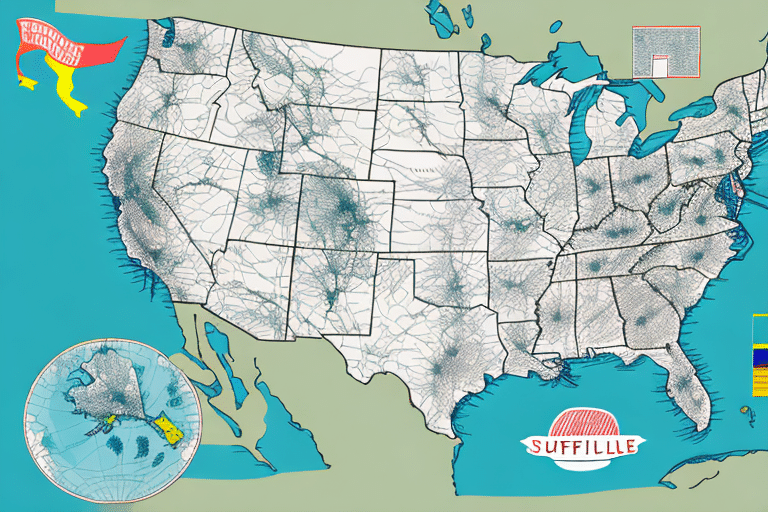Understanding FedEx Delivery Area Surcharges
FedEx is one of the leading courier services globally, serving millions of customers every day. However, when using FedEx to ship packages, you might encounter an additional charge known as the “Delivery Area Surcharge.” This article provides an in-depth analysis of this extra fee, offering detailed explanations and insights into understanding and managing FedEx Delivery Area Surcharges.
Reasons Behind Delivery Area Surcharges
Cost Compensation for Extended Deliveries
FedEx imposes delivery area surcharges to offset the additional costs associated with delivering packages to certain locations. These areas often involve increased distances, limited infrastructure, or accessibility challenges, requiring extra resources to maintain service quality.
Industry-Wide Practice
Delivery area surcharges are not unique to FedEx. Other shipping companies like UPS and DHL also implement similar fees to cover the higher costs of delivering to remote or hard-to-reach areas. The specific surcharge amounts can vary depending on the carrier, location, and service type selected by the customer.
Types of FedEx Delivery Area Surcharges
- Residential Delivery Surcharge: Applied to packages delivered to residential addresses, covering the additional time and resources required for these deliveries.
- Extended Delivery Area Surcharge: Charged for deliveries outside FedEx’s standard service areas, necessitating extra logistical efforts.
- Remote Area Surcharge: Imposed on deliveries to remote or difficult-to-access locations, requiring special handling and transport resources.
- Out of Delivery Area Surcharge: Applied when packages are delivered to regions not routinely serviced by FedEx, often involving third-party carriers.
Calculating and Understanding Surcharge Costs
The cost of delivery area surcharges varies based on the destination and the type of surcharge applied. While some fees may be as low as a few cents per shipment, others can reach up to $120 per shipment, significantly impacting the total shipping cost.
To determine the exact surcharge for your shipment, utilize FedEx’s online surcharge calculator by entering your origin and destination zip codes. Alternatively, contacting FedEx customer support can provide detailed information about applicable fees.
Additional Fees to Consider
In addition to delivery area surcharges, FedEx may charge other fees such as fuel surcharges, residential delivery fees, and handling fees for oversized or special handling packages. These fees vary depending on the destination, package size, and weight. It is recommended to review FedEx’s fee schedule or consult with a customer service representative to understand all potential costs involved.
Strategies to Minimize FedEx Delivery Area Surcharges
Opt for FedEx Pickup Locations
Choosing to have your packages delivered to a nearby FedEx location for pickup can help you avoid or reduce delivery area surcharges. This option is available for both residential and commercial deliveries and can be selected during the checkout process.
Split Shipments
Consider splitting your shipment into smaller packages to avoid exceeding weight or size restrictions that may trigger surcharges. This strategy can help manage costs, particularly for heavier items.
Accurate Address Information
Ensure that you provide the correct address format and accurate details to prevent reshipment or redirection fees. Accurate address information minimizes the likelihood of additional charges.
Explore Alternative Carriers
If FedEx’s surcharges are too high for your delivery area, consider using alternative carriers like UPS, DHL, or the United States Postal Service (USPS), which may offer more favorable rates and fewer or lower surcharges for specific regions.
Negotiate with FedEx
For regular FedEx customers, there may be opportunities to negotiate lower surcharge rates, especially if you frequently ship to specific areas. Demonstrating a strong shipping record and the impact of surcharges on your business can aid in negotiations.
Use Third-Party Logistics Providers
Third-party logistics providers can help navigate complex shipping rules and minimize surcharges and fees by optimizing shipping strategies and routes.
Impact of Delivery Area Surcharges on E-Commerce Businesses
Delivery area surcharges can significantly affect e-commerce businesses, especially those shipping to remote or rural areas. These additional fees can impact profitability and competitiveness, making it essential for online retailers to factor in these costs when pricing their products or considering alternative shipping options.
Moreover, unexpected surcharges can lead to customer dissatisfaction and negative reviews. To maintain customer trust, online retailers should be transparent about any additional fees or consider offering free shipping promotions to offset surcharge impacts.
Alternatives to FedEx and Future Trends
Exploring Other Shipping Options
If FedEx delivery area surcharges are too burdensome, consider alternative courier services. Regional or local couriers might offer competitive rates and specialize in delivering to hard-to-reach locations. Additionally, the United States Postal Service (USPS) may provide more favorable surcharge policies for certain areas.
Future of Delivery Surcharges
As the e-commerce industry continues to grow, so will the demand for shipping services, potentially increasing delivery area surcharges. However, advancements in route optimization, new vehicle technologies, and alternative delivery methods like drones or autonomous vehicles could help minimize these additional fees and improve service quality.
Conclusion
Understanding FedEx Delivery Area Surcharges is essential for effectively managing your shipping costs and avoiding unexpected expenses. By planning ahead, employing strategies to minimize surcharges, and considering alternatives, you can ensure timely and cost-effective delivery of your packages. Staying informed about FedEx’s surcharge policies and leveraging reputable sources for shipping information can further enhance your shipping strategy and business operations.






















